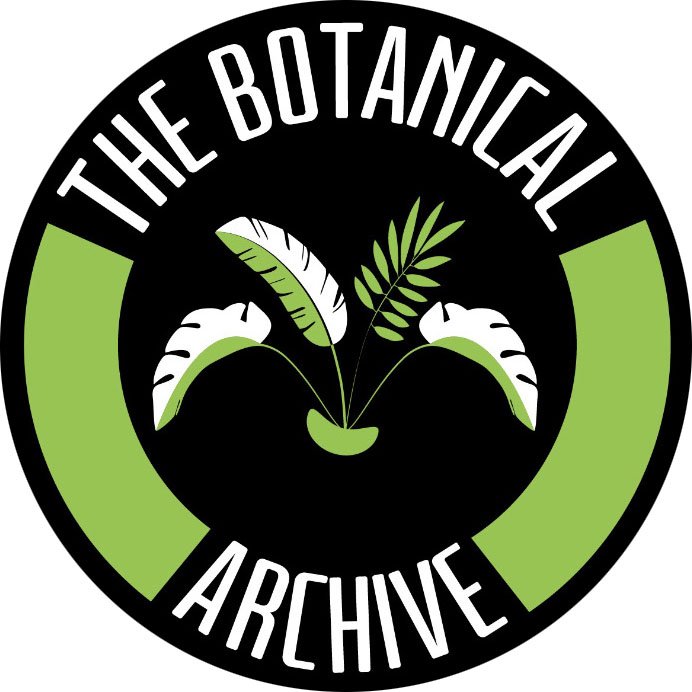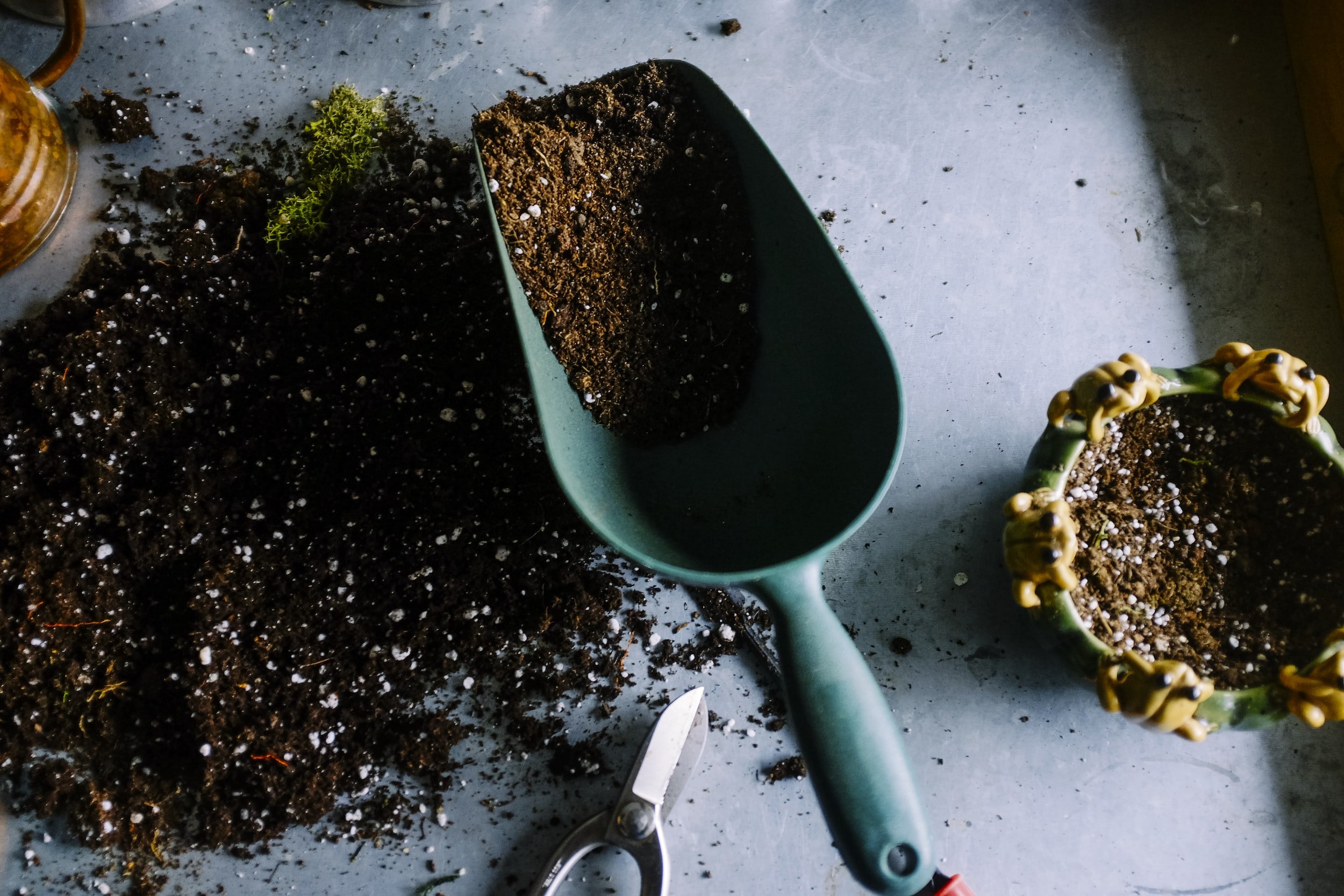Soil and Potting Mix for Indoor Plants: a peat-free Guide
Choosing the right house plant soil or potting mix for your indoor plants is essential if you want them to healthy growth and keep them thriving. A good houseplant potting mix will result in better overall plant health, greener leaves and longer lasting plants.
Peat-free mixes are becoming more popular as peat bogs, a vital part of our ecosystem, are threatened by peat harvesting.
Here’s a quick guide to help you choose the right soil or potting mix for your plants.
Firstly - What is the difference between soil and potting mix?
Soil is typically a blend of minerals and organic matter that are found in nature. This can vary in composition depending on the area where it was taken from.
Houseplant potting mix, however, is usually is a blend of soil and other additives specifically designed for growing plants indoors. It may include ingredients like perlite, composted bark or coconut coir to provide aeration while retaining moisture.
Peat-Free
As its name suggests, peat-free soil and potting mixes do not include peat moss in their ingredients. These blends typically contain materials such as composted bark, coconut coir, perlite, vermiculite and other organic matter. They provide excellent aeration while also retaining moisture, making them suitable for a wide range of house plants.
Peat-free options are also much better for the environment as peat bogs are vital ecosystems that are threatened by peat harvesting.
What type of soil is best for houseplants?
This depends on the type of plant you’re growing. For succulents and cacti, a soil mix with more horticultural grit or perlite is best as it drains quickly and retains minimal moisture.
For other indoor plants like ferns or tropical plants, a peat-free potting mix that contains composted bark is ideal as it retains more moisture while still providing drainage.
For aroids like peace lilies and philodendrons, a specially blended mix with perlite, orchid bark and worm-castings is recommended as it helps to retain moisture but drains easily.
No matter what type of soil or potting mix you choose for your indoor plants, make sure to research the needs of each individual species to ensure that they’re getting the best possible care.
With peat-free options now more widely available, you can have peace of mind knowing that you’re doing your part in protecting our environment while still giving your plants the nutrients they need!
Can I use outdoor soil for my houseplant?
Garden soil is great for gardens but it is not recommended for your houseplants. Garden soil may contain disease-causing organisms or pests that can be harmful your plants. Garden soil does not have the same texture or composition as potting mix, and often lacks sufficient aeration and drainage for houseplants.
Can I use general multi-purpose compost for my houseplant?
No, general multi-purpose compost for outdoor plants is not suitable for houseplants. While it can provide nutrients, it often lacks proper drainage and aeration which can lead to root rot or other issues with the plant. It’s best to use a mix specifically designed for houseplants as these typically contain additives such as bark, coconut coir and perlite that help retain moisture while providing adequate drainage.
What kind of soil do my plants need?
Most indoor plants come in standard nursery pots which have a mix of potting soil and peat moss. As previously mentioned, this is often not ideal as it can prevent proper drainage and aeration of the roots. Many houseplants will be fine but in these pots for a while but at some point you are going to want to switch to a more bespoke mix for these plants.
Luckily many suppliers are now taking note and potting mixes specifically designed for varieties of houseplants are on the market. These will contain the right nutrients for your houseplant but will sometimes still contain peat but keep an eye out for ones without.
Researching the needs of your particular houseplant is key in choosing the right mix for them. Consider our plant profile pages for better ideas about what type of houseplant potting mix you need, from your cacti and succulents to your aroids and ferns we will continuously update these pages.
Houseplant Soil PH
For most houseplants it is important to maintain the pH of the soil in which they are growing. The optimum pH for most indoor plants is between 6-7. If you find your plant’s soil pH too low or high you can use a soil testing kit to measure and condition it accordingly with fertilizers and amendments.
Maintaining the right pH level will ensure your plants get all the nutrients they need while preventing nutrient deficiencies or toxicities due to an incorrect balance of minerals.
DIY Houseplant Potting Mix
The best mix for your houseplant will depend on the type of plant you own. A good idea is a to research the native habitat of the plant and work from there.
An often cheaper way to create an environment for your houseplants to thrive is to make your own housplant potting mix. Prices have gone up for a lot of store bought mixes but you can source most of these ingredients from plant supply shops a lot cheaper.
Homemade mixes can be created in bulk and are often better than the stuff you can buy from the shop or your gardening stores.
You can also mix whatever components you like into your soil to meet the needs of the houseplant you are working with, whether these are cuttings, cacti, succulents or trailing houseplants. I would always recommend your own mix for healthy growth and great results.
General peat-free houseplant potting mix
1. 2 part coco-coir
2. 0.5 part worm castings
3. 1 part orchid bark
4. 1 part perlite or horticultural grit
Cacti and succulent peat free houseplant potting mix
1. 1 part coco-coir
2. 0.25 part worm castings
3. 1 part perlite or horticultural grit
What do I cover my houseplant soil with?
It is can be a good idea to cover the surface of your houseplant's soil with a thin layer of mulch such as pebbles, bark chips, moss. This helps reduce moisture loss and prevents the soil from drying out too quickly.
Additionally, this layer of mulch helps create a more attractive display for your houseplant. Finally, it also serves as a physical barrier that helps keep pests away!
FAQ's
Why is my soil mouldy?
Mould can form on the surface of soil when it is too wet and not draining properly. This can be a sign that your potting mix isn't ideal for your plant or that you are over-watering it.
Consider switching to a more suitable mix, and make sure to research the individual needs of your houseplant to ensure they’re getting enough water but not too much.
What does pH mean?
pH stands for ‘potential hydrogen’ and is a measure of how acidic (low numbers) or alkaline (high numbers) a substance is. Generally speaking, most indoor plants prefer slightly acidic soils with a pH between 6-7. A soil testing kit will help you measure the pH level.
Can I reuse my potting mix?
Yes, you can reuse your potting mix. However, it is important to make sure you are replenishing the nutrient content in older mixes. Worm castings are a good source of nutrients to add into old mixes!
What is good drainage for houseplants?
Drainage is the process of removing excess water from soil. Good drainage allows air to reach the roots and prevents waterlogging/root rot. A general rule of thumb for good drainage is to clump up your mix into your fist, if it comes away loose then your mix has good drainage, if it sticks together consider adding more grit.
What are these small flies coming out of my soil?
Those are fungus gnats! Annoying little flies that live in the top layer of moist soil of your houseplant that can be tricky to get rid of. The good news is they wont cause any harm to your plant but can be a sign of overwatering.
It is recommended to let the top layer of soil dry out before watering again as this sometimes gets rid of a smaller infestation, for larger infestations use a product like mosquito bits in water to remove them.
The Botanical Archive is here to help if you need any more advice or assistance. We are an RHS award winning Interior Plant Styling/Landscaping service dedicated to helping everyone get the most out of their indoor space so don't hesitate to reach out if you have any questions! We provide plant consultations, interior plant styling, sourcing and installation for homes and offices!





